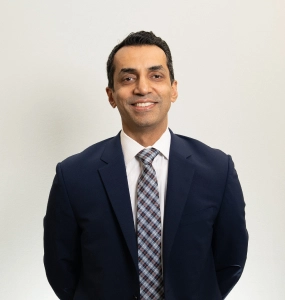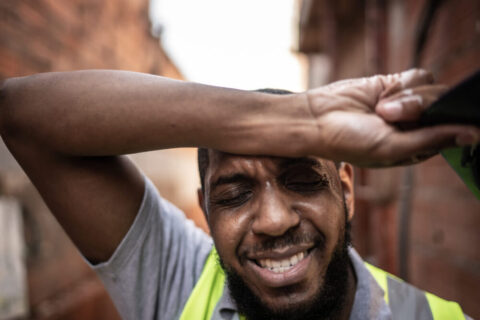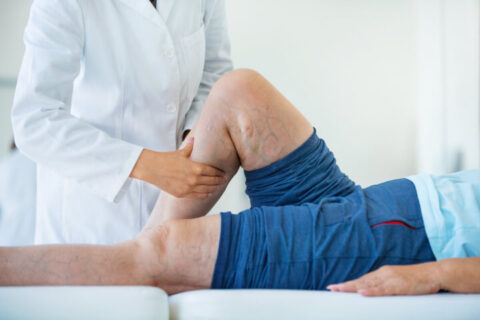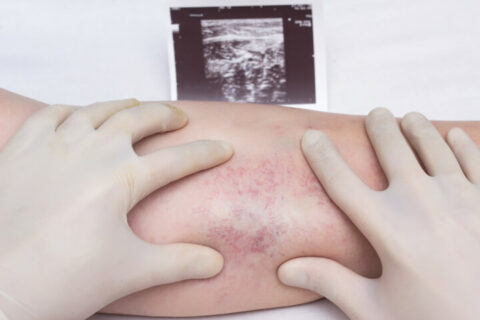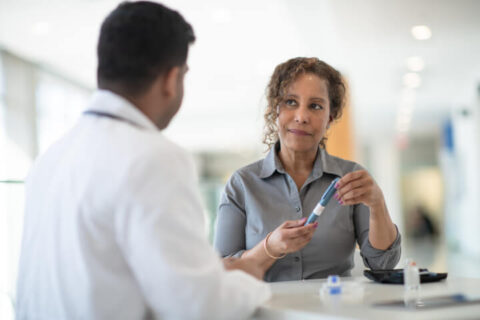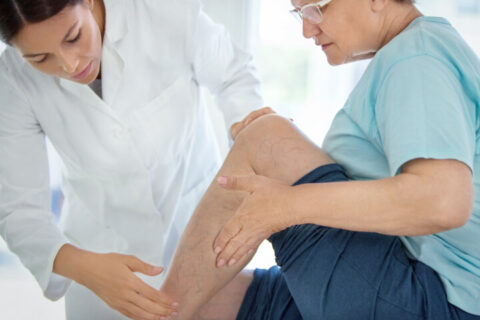A varicose or spider vein can appear anywhere on the body, including the buttock. It can be embarrassing when an abnormal vein forms in this area. Although this area of the body is usually covered, these veins can affect a patient’s self-esteem. They may even trigger chronic pelvic pain in some cases. Luckily, there are treatments available to resolve these bulging veins and alleviate the symptoms they induce.
But why do varicose veins form on the buttocks? Varicosities are enlarged veins that are common in the lower leg. However, they can also exist on the buttocks and vaginal area during pregnancy. The uterus puts pressure on the inferior vena cava during pregnancy which contributes to swollen veins. Hemorrhoids are another type of varicose vein in the anus or rectum that develops during pregnancy and is frequently caused by constipation.
Why Do Varicose Veins on Buttocks Appear?
A varicose vein on the buttock is usually harmless, but it can become itchy and unpleasant. Fortunately, it usually dissipates within three months to a year of childbirth. Pelvic varicose veins frequently resemble thread veins and appear twisted or bulging.
They can swell and rise above the skin’s surface. This vein problem is typically found on the thighs, calves, or within the leg. However, these swelling veins can form around the genitals and buttocks during pregnancy.
Spider veins are smaller than varicose veins. They’re closer to the skin’s surface than varicose veins and are usually red or blue. With their short, jagged lines, they can depict tree branches or spider webs. They can cover a tiny or large area of the skin. They can be seen on the legs and face.
In the United States, approximately 50 to 55 percent of women and 40 to 45 percent of men have a vein problem. Pelvic veins affect half of the people over the age of 50. Varicose veins are due to faulty or damaged vein valves. The heart circulates oxygen- and nutrient-rich blood throughout the body via arteries. Blood is then returned by veins (from the body to the heart).
This vein disease develops as a result of blood pooling, most commonly in the leg veins. Blood pooling can be exacerbated by congenitally malformed vein wall or other factors such as pregnancy or deep vein thrombosis (vein swelling due to a blood clot).
Veins have one-way flaps that avert reverse blood flow as it moves up the legs. If the valves deteriorate, blood can spill back into the blood vessel and accumulate there. (It’s known as venous insufficiency.) Varicose veins form when backed-up blood causes the veins to enlarge.
Read More: Facial Varicose Veins: What You Need to Know
Who Is Susceptible to Varicose and Spider Veins?
Many factors contribute to the development of varicose or spider veins, such as:
Hormonal changes. These take place during puberty, pregnancy, and menopause. Birth control pills and other estrogen and progesterone-containing medications may also be reasons for the formation of spider or varicose veins.
Medical background. The risk is increased for people that are born with weak vein valves. Having a family member with vein disease raises the risk. Around half of all those with varicose veins have a family member who also has them.
Pregnancy. The volume of blood in a person’s body increases when they’re pregnant. It can lead to enlarged veins. The expanding uterus also puts strain on the ovarian vein leading to venous reflux. They usually disappear three months after giving birth. With each subsequent pregnancy, more varicose and spider veins appear.
Aging. The valves in the veins may weaken and stop working well while getting older.
Sun exposure. It can result in spider veins on the cheeks or nose for a person with a fair complexion.
Lack of physical movement. Long periods of sitting or standing may cause the veins to work harder to pump blood to the heart. It becomes worse when sitting with the legs bent or crossed.
Obesity. Being obese or overweight can put additional strain on the veins. It can result in varicose veins.
Risks Reduction and Treatment for Varicose Veins
Varicose veins are due to blood pooling in the veins. People can avoid blood from clotting in the buttocks and other symptoms by doing the following:
- Sleeping with elevated feet
- Participating in regular exercise
- Eating a low-salt diet
- Avoiding standing for long periods
Non-invasive treatments can minimize leg pain and the appearance of varicose veins. Traditional varicose vein treatment includes sleeping with the legs elevated and wearing compression stockings. For people with severe leg pain due to varicose veins, nonsurgical treatments are available such as:
Sclerotherapy. It’s the best vein treatment option for varicose veins and spider veins on the buttocks. A vein specialist uses a thin needle to infuse the solution into the affected vein during this treatment.
Ovarian vein embolization. It’s a minimally invasive therapy for pelvic congestion syndrome; it’s a painful disorder characterized by enlarged or varicose veins in the pelvis.
Endovenous laser therapy. It’s effective for treating large varicose veins in the buttocks. A laser fiber will be inserted into the vein through a catheter/thin tube. While doing so, the doctor uses a duplex imaging screen to monitor the vein.
Radiofrequency ablation. (also known as RF ablation) It’s a procedure used to treat large veins, such as the great saphenous vein. An interventional radiologist uses heat in RF ablation to cure and close the affected vein from the inside.
Vein-stripping surgery may be done to remove severe varicose veins. In most cases, symptoms of varicose veins worsen over time unless people seek medical attention or consider self-treatment.
Learn More: A Complete Guide to Your Non Surgical Varicose Vein Treatment
Schedule an Appointment at The Vein Center Doctor Today

If you have spider veins, varicose veins, or some vein problems affecting your buttocks, an experienced vein specialist at The Vein Center Doctor can assist you. We can help relieve your irritation while also preventing the development of more severe health conditions. If you notice any of these health problems, please reach us to discuss the best individualized treatment options for you.
For scheduling a consultation with us, you can either fill out our form online or call us via our phone numbers to begin your journey toward looking and feeling better.
